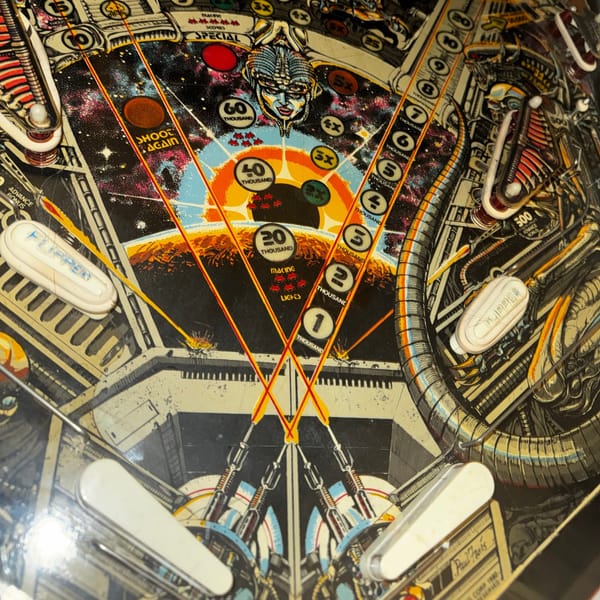Learning to Be Wrong
The smartest people aren’t always right—they’re just the fastest to admit when they’re wrong.

There’s something quietly radical about saying the words “I was wrong.” In a culture that prizes certainty, expertise, and fast takes, admitting error feels like breaking character. It can make you seem weak, indecisive, or, worst of all, uninformed. But what if the opposite were true? What if recognizing and embracing your mistakes was actually one of the most intelligent, growth-minded moves you could make? What if being wrong was the gateway drug to getting smarter?
The uncomfortable truth is that error is not an obstacle to knowledge. It is the path. And curiosity—the sincere desire to understand the world more deeply—is what drives us down that path. Without it, failure is just failure. With it, failure becomes feedback. And that subtle distinction changes everything.
Let’s unpack what it really means to be wrong, why most of us fear it, and how the curious mind not only tolerates failure, but thrives on it.
Why It Feels So Bad to Be Wrong
The feeling of being wrong is, paradoxically, almost impossible to notice—until you realize it. In her 2010 book Being Wrong, Kathryn Schulz calls this the “error blindness.” When you’re in the middle of being wrong, you feel exactly the same as when you’re right. It’s only when new information smacks into your existing model of the world that the illusion breaks.
That moment is not just a mental shift—it’s a physiological jolt. Brain imaging studies have shown that making a mistake activates the anterior cingulate cortex, a region associated with conflict detection. And when we realize we’ve made a mistake, the brain engages its reward centers—especially if we update our thinking as a result. In other words, the brain wants to learn from mistakes. But our egos often get in the way.
This resistance has deep roots in our psychology. From childhood, most of us are trained to associate being right with being good. Think about standardized tests, spelling bees, classroom red pens. The lesson isn’t “keep iterating”—it’s “get it right the first time.” So when we’re wrong, we don’t just feel incorrect. We feel ashamed. That shame can curdle into defensiveness, denial, or doubling down. The mind protects itself by distorting reality.
Curiosity is what cuts through that defense mechanism. It transforms shame into interest. Instead of recoiling from the moment of error, curiosity leans in and asks, “What just happened?”
The Science of Failing Forward
Failure, as painful as it can be, is the brain’s favorite teacher. In educational psychology, this is called “productive failure”—a phenomenon where initial struggle enhances later learning.
A classic experiment by Manu Kapur showed that students who tried (and failed) to solve complex math problems before being taught the solution actually understood the concept better than those who were taught directly. The reason? The act of wrestling with the problem primed their minds for deeper learning. They engaged with the structure of the problem. They built and revised mental models. They cared about the solution because they had skin in the game.
This principle doesn’t just apply to students. It applies to pilots, designers, software engineers, doctors, and anyone else who must think in systems and make critical decisions. In aviation, for example, every commercial pilot trains in a simulator where they’re intentionally exposed to failure scenarios—engine fires, equipment failures, severe weather. These aren’t just drills. They’re a chance to learn in high-stakes, low-risk settings. By encountering errors in training, pilots are better prepared to handle them in real life. In that sense, failure becomes resilience.
The same dynamic plays out in medicine. One of the most powerful tools in a hospital’s safety protocol is the “Morbidity and Mortality” conference, or M&M. Doctors gather to discuss cases where something went wrong—not to assign blame, but to uncover what can be learned. The unspoken rule is: mistakes are inevitable. What matters is how we respond.
That shift from blame to curiosity is the beating heart of growth.
When Being Wrong Was the Best Thing That Happened
Let’s zoom out and look at a few moments in history and life where being wrong changed the game.
Invention of the Post-it Note
Spencer Silver, a chemist at 3M, was trying to create a super-strong adhesive. Instead, he created an absurdly weak one. At first, it was considered a failure. But a colleague, Art Fry, realized it was perfect for reusable, removable bookmarks. Today, Post-it Notes are a global staple, all because someone looked at a failure and stayed curious.
Netflix’s Origin Story
Reed Hastings once returned a rented copy of Apollo 13 to Blockbuster and was hit with a late fee of $40. He was frustrated, of course—but also curious. Why was the rental system so inflexible? That small personal annoyance led to the creation of a company that would eventually transform how the entire world consumes media.
The Mars Climate Orbiter
In 1999, NASA lost a $125 million spacecraft because two teams used different units of measurement: one in imperial, the other in metric. The result was catastrophic. But the failure led to new protocols, better cross-team communication, and a complete overhaul of their data verification process. NASA got smarter—because they had to.
James Dyson and the 5,126 Failed Prototypes
Dyson didn’t succeed on his first vacuum. Or his hundredth. It took over 5,000 prototypes before he launched a working model. His iterative process was expensive, frustrating, and often demoralizing. But with every failure, he got closer to a breakthrough.
In each of these cases, the moment of being wrong was not the end of the story. It was the beginning of a better one.
The Role of Curiosity in Redefining Failure
So what transforms a mistake into a moment of insight?
The answer is curiosity. Specifically, epistemic curiosity—the drive to fill in knowledge gaps. Researchers have found that when we’re curious, our brains release dopamine, the same neurotransmitter involved in pleasure and motivation. That makes curiosity inherently rewarding, even when the subject matter is complex or uncomfortable.
But curiosity also has a moral component. It’s not just about collecting trivia. It’s about being willing to revise your beliefs in light of new evidence. That means caring more about the truth than your ego. And that’s hard. In a polarized world, it’s much easier to dig in than to say, “I’m not sure,” or “Maybe I got this wrong.”
Being curious after a mistake means asking:
- What led me to that assumption?
- What am I missing?
- Who sees this differently, and why?
It means treating every wrong answer not as a reflection of your intelligence, but as a clue. It means shifting from a performance mindset to a learning one.
How to Practice Being Wrong, On Purpose
This doesn’t mean we should aspire to fail recklessly. It means we should create conditions where learning from failure is possible.
One powerful practice is the pre-mortem. Before launching a project or making a decision, imagine it has failed. Then ask: What went wrong? This shifts your mindset from defensiveness to foresight. It invites error into the planning process instead of denying its existence.
Another is reflective journaling. After a tough conversation, a project setback, or a surprising outcome, jot down what happened, how you felt, and what you might learn from it. Writing forces clarity. Over time, you’ll start noticing patterns—and those patterns are gold.
If you’re a manager, model this publicly. Celebrate not just success, but insight. When someone on your team admits a misstep and learns from it, treat that like a win. Curiosity is contagious, but only if it’s safe.
In fact, one of the most impactful phrases a leader can say is: “I was wrong about that.” It opens the door for everyone else to do the same.
We often equate intelligence with having the right answers. But the truly brilliant minds—scientists, philosophers, artists, entrepreneurs—don’t fixate on certainty. They chase understanding.
Albert Einstein once said, “A person who never made a mistake never tried anything new.” But he also said, “The measure of intelligence is the ability to change.” Being wrong doesn’t mean you’re dumb. It means you’re learning.
The world is a shifting, evolving, deeply complex place. The more willing you are to let go of outdated beliefs, the faster you evolve. And evolution is the ultimate form of intelligence.
So next time you catch yourself being wrong, don’t panic. Don’t retreat. Lean in. Be curious. Ask what the mistake is trying to teach you. Because in that moment, you’re not failing. You’re becoming someone wiser.




